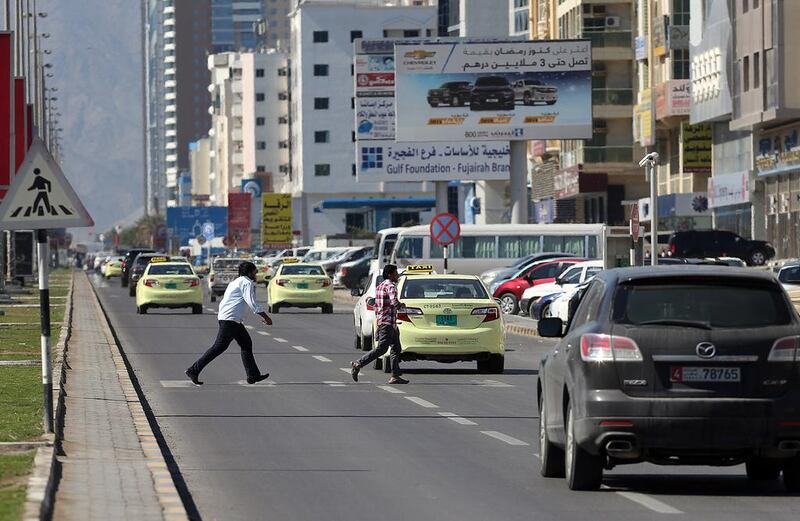ABU DHABI // The World Health Organisation has offered the UAE a number of proposals in a bid to reduce deaths on the country’s roads.
In its 2015 World Health Organisation Global Status Report on Road Safety, which is based on UAE data from 2013, the organisation has suggested cutting back the speed limit to 50kph in some built-up areas.
Other proposals in the report include mandatory laws on backseat passengers wearing seatbelts and children of a certain age using car seats.
Across residential areas the speed limit is 60kph, rising up to 80kph on some roads. On motorways, drivers can drive at 120kph with a 20kph buffer.
Having an effective road-safety system in place would support good drivers and foster a culture of safe driving, said Tami Toroyan, of the WHO’s department of violence and injury prevention.
And one of the ways to improve the system would be to reduce the speed limit, Ms Toroyan said, adding that in many places the mobility needs of the population are put above their safety.
“Eighty kph is far too high for speeds where there are pedestrians in high concentration, such as urban areas,” she said.
“In countries that are doing well in road safety, the idea is to acknowledge that humans do make errors but to ensure the price for these errors is not death or serious injury.”
Speed limits should also be based on the structure and use of a road, said Michael Dreznes, executive vice president of the International Road Federation.
“For example, if pedestrians are located close to the road and are interacting with the road, the appropriate speed limit should be 30kph,” he said.
On busier roads speed limits should be influenced by a number of factors such as motorway exits and weather conditions.
External factors aside, Mr Dreznes said that, ultimately, it comes down to the driver.
“The roads may be geometrically designed to safely handle vehicles travelling at 140kph, but are drivers properly trained to drive at these speeds and do they follow the rules at these speeds?
“Driver behaviour becomes very important at these high speeds.”
An adult hit by a car travelling at less than 50kph has a more than 80 per cent chance of survival. If they are hit by a car travelling at 80kph, the risk of death rises to almost 60 per cent, Ms Toroyan said.
And, in the first nine months of the year, speeding without taking into account road conditions, sudden swerving and failure to leave sufficient space between vehicles were among the leading causes of accidents.
But according to the WHO report, which said there were 10.9 deaths per 100,000 motorists in the UAE, the number of fatalities is falling.
In 2008, the number of traffic deaths per 100,000 people was more than 20, and in data from 2010, it was 12.7.
One motorist who was in favour of a new speed limit was 28-year-old Majid Al Mazroue. He said that reducing the speed limit was the only way to have a positive impact on the number of crashes.
“We all know the dangers caused by speeding drivers. I think setting a 50kph on urban and residential areas is the right thing to do,” he said. “Personally, 80kph on Khalidiya Street is too high and isn’t safe for pedestrians. Look at these people who illegally cross the street and could get hit by speeding cars.”
Although lowering speed limits would help reduce road deaths, some motorists said the move would allow for slow drivers to further reduce their speed – to the detriment of other road users.
“We are the ones suffering from slow drivers who occupy the left and middle lane,” said Bibin Kuriakose, 30. “They can be a menace on some roads, making it difficult for us to manoeuvre through them.”
Akin Adamson, Transport Research Laboratory’s regional director for the Middle East, said regardless of speed, people should travel in the right-most lane, except when overtaking.
“I believe the 20kph buffer is quite high really compared to most international standards,” he said. “In Australia, for example, it’s 3 per cent, so if the speed limit is 100kph, you have 3kph of grace.”
rruiz@thenational.ae






